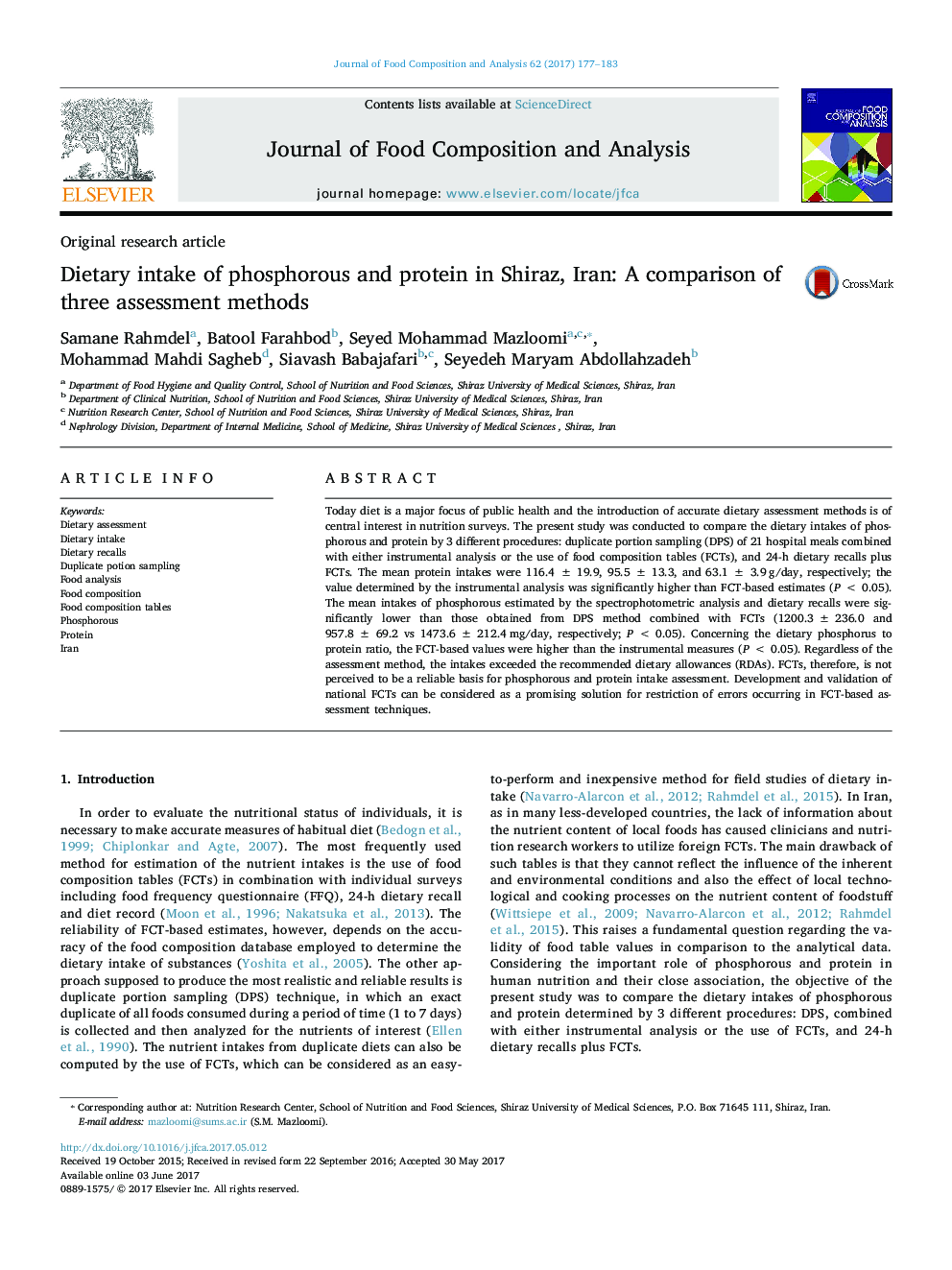| کد مقاله | کد نشریه | سال انتشار | مقاله انگلیسی | نسخه تمام متن |
|---|---|---|---|---|
| 5136873 | 1494480 | 2017 | 7 صفحه PDF | دانلود رایگان |

- FCTs are not suitable for phosphorous and protein intake assessment in Shiraz, Iran.
- FCT-based tools overestimated dietary phosphorus-to-protein ratio in Shiraz, Iran.
- Instrumental analysis of daily meals is thought to be the most reliable method.
- Development and validation of national FCTs result in accurate FCT-based estimates.
Today diet is a major focus of public health and the introduction of accurate dietary assessment methods is of central interest in nutrition surveys. The present study was conducted to compare the dietary intakes of phosphorous and protein by 3 different procedures: duplicate portion sampling (DPS) of 21 hospital meals combined with either instrumental analysis or the use of food composition tables (FCTs), and 24-h dietary recalls plus FCTs. The mean protein intakes were 116.4 ± 19.9, 95.5 ± 13.3, and 63.1 ± 3.9 g/day, respectively; the value determined by the instrumental analysis was significantly higher than FCT-based estimates (P < 0.05). The mean intakes of phosphorous estimated by the spectrophotometric analysis and dietary recalls were significantly lower than those obtained from DPS method combined with FCTs (1200.3 ± 236.0 and 957.8 ± 69.2 vs 1473.6 ± 212.4 mg/day, respectively; P < 0.05). Concerning the dietary phosphorus to protein ratio, the FCT-based values were higher than the instrumental measures (P < 0.05). Regardless of the assessment method, the intakes exceeded the recommended dietary allowances (RDAs). FCTs, therefore, is not perceived to be a reliable basis for phosphorous and protein intake assessment. Development and validation of national FCTs can be considered as a promising solution for restriction of errors occurring in FCT-based assessment techniques.
Journal: Journal of Food Composition and Analysis - Volume 62, September 2017, Pages 177-183